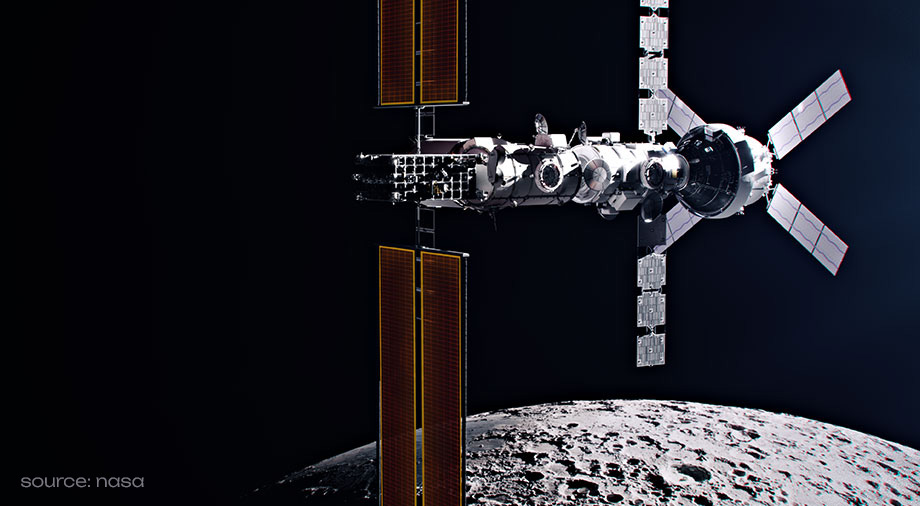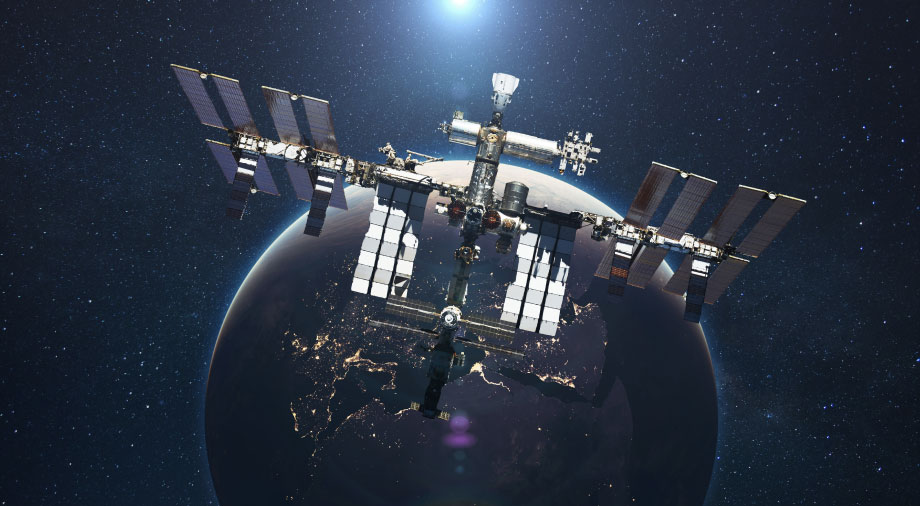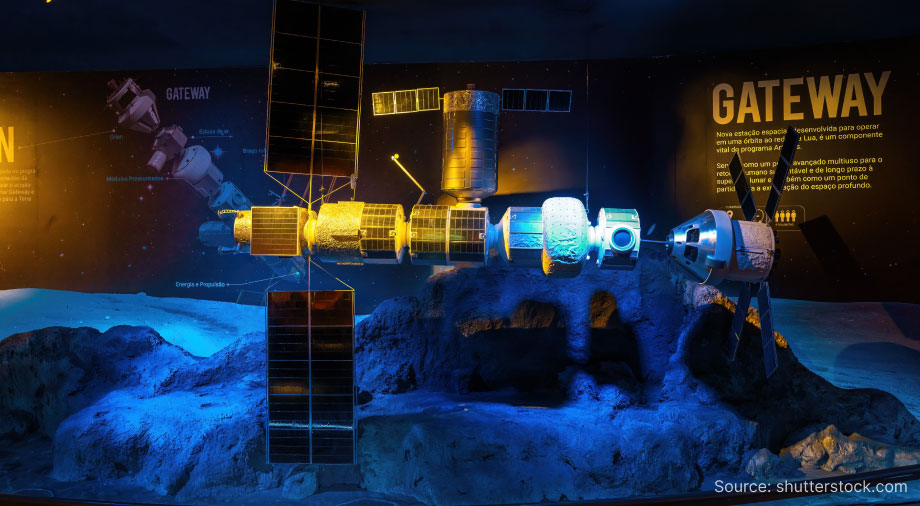The last time humans set foot on the Moon was over half a century ago, in 1972. Since then, humanity has been striving not only to repeat this achievement but also to study the Moon in detail and use it as a springboard for more ambitious plans, such as establishing a presence on Mars and venturing into deeper regions of the Solar System. The construction of Gateway, the first international lunar space station, will help achieve these goals.
In the first part, you learned about Gateway’s capabilities, the project participants, and the challenges they have already encountered. Today, we will discuss the specific research to be conducted on the station and the work currently underway to bring it into operation.
Why is Gateway necessary?
In the first part of the article, we discussed the background of this project. Even setting aside the personal initiatives of the 45th President of the United States, there remains much in this endeavor that promises significant benefits for humanity and could enable a decisive step in the exploration of space.
One of the earliest mentions of Gateway (at that time called the Deep Space Gateway) dates to March 2017, when NASA outlined the project’s objectives: “A crewed spaceport in lunar orbit […] that will serve as a gateway to deep space and the lunar surface […], equipped with logistics modules for conducting research.” The agency clarified that Gateway would allow for a more detailed study of space in general, particularly the areas near the Moon, “to gain experience with crewed missions venturing farther into the Solar System, access the lunar surface for robotic missions, and return to Earth within days rather than weeks or months.”
Gateway will potentially play a pivotal role in achieving the goals outlined in Space Policy Directive-1. With the participation of ambitious international partners, the United States and NASA will be able to implement innovative approaches that lay the groundwork for human exploration of the lunar surface and previously uncharted regions of the Solar System. Gateway will differ fundamentally from the International Space Station, which is slated for “retirement” by the end of the decade. Astronauts will stay on the lunar space station periodically, with the station remaining uncrewed for much of the time.
The initial scientific research onboard Gateway will focus on the Sun and deep space: everything beyond the Moon’s orbit and outside the Solar System. For instance, the James Webb Space Telescope, positioned about 1.5 million kilometers from Earth, operates in deep space.

Source: NASA
Radiation instruments installed on Gateway will help scientists better understand the factors influencing space weather, such as solar wind streams, coronal mass ejections, and intense solar flares. Space weather significantly impacts astronaut health and, ultimately, the success of missions traveling far from Earth.
Scientists working on Gateway plan to extract samples of water, minerals, and chemical elements from lunar soil. Water is essential for transforming the Moon into a refueling station for future missions to Mars. The collected water, subsequently deposited as ice in the polar regions of the Moon, can be melted and chemically processed to produce hydrogen and oxygen, which can then be used as liquid fuel. The station will also provide intermediate storage for collected material samples before they are sent to Earth.
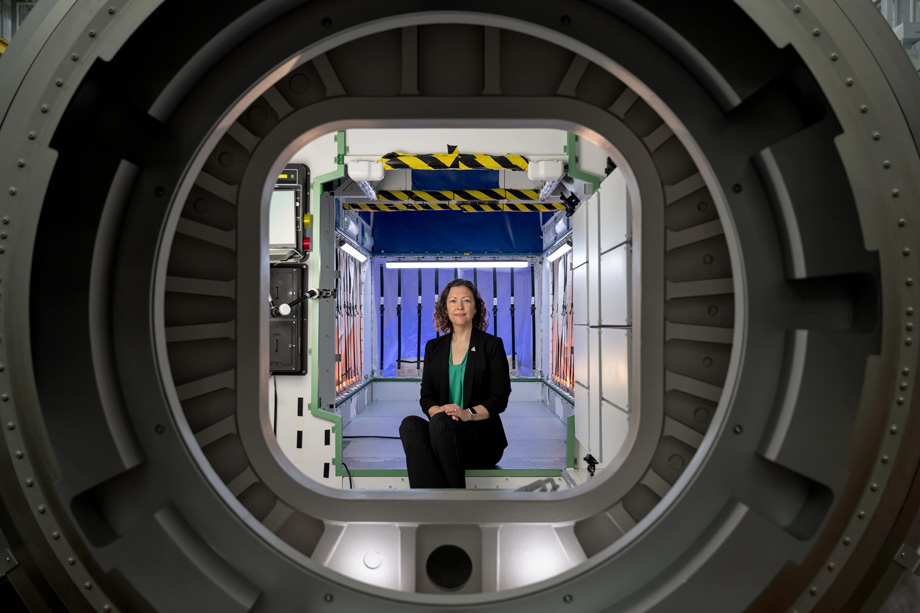
Source: NASA
Staying on the Gateway station for extended periods—currently plans are for 30 to 90 consecutive days—will eventually help humans refine their survival skills for deep space. James Carpenter, a member of ESA’s Moon research team, is confident: “We will be able to study the effects of radiation on human physiology; we will be able to collect dust particles that come from asteroids or comets or possibly objects outside our solar system. We will be able to study the interaction of the sun and the moon with Earth’s magnetosphere. Gateway would also be ideal for launching tiny CubeSat satellites and other devices that could open up exploration of the solar system.”
Gateway is also of great interest to astronomers, who plan to use the lunar space station to assemble observatories designed for deep-space studies. By investigating the low-frequency radio waves permeating space, astronomers can uncover information about the earliest periods of our universe, dating back to just after the Big Bang. Such research is currently impossible to conduct from Earth due to interference caused by human-made devices.
Scott Pace, Executive Secretary of the National Space Council, highlighted that Gateway’s value could ultimately lie in its role as a fuel depot, enabling the reuse of lunar landers, or at least parts of them. “Instead of abandoning expensive vehicles after a single trip, we should contemplate creating a fuel depot to enable repeated visits to the moon and pave the way to Mars,” he said, “and that’s exactly what NASA has proposed with the lunar Gateway.”
NASA also plans to develop a unique lunar infrastructure by involving partners in the design of crew systems, propulsion units, and science platforms, managing logistics operations, and addressing numerous other tasks. This approach will consolidate efforts and establish international standards for deep space exploration. These standards will help NASA and its partners prepare for manned missions to Mars, first simulating them at a relatively short distance from Earth. For now, Gateway will support the farthest crewed space missions ever attempted.
What we know about the research that will be carried out at the station
Gateway’s location will enable research in the Earth sciences, heliophysics, and astrophysics. NASA states that fundamental physical studies will become possible thanks to “enhanced views of Earth, the Sun, the Moon, and space that are unavailable from Earth’s surface or low Earth orbit.” However, the primary focus at this stage is on studying solar radiation and space weather.
To this end, Gateway’s international partners have already selected three scientific instruments. These include NASA’s HERMES, ESA’s ERSA, and IDA, jointly developed by ESA and JAXA. Here’s what is currently known about them.
HERMES
Mounted on the exterior of the station, HERMES (Heliophysics Environmental and Radiation Measurement Experiment Suite) will consist of four integrated instruments. These include a magnetometer for measuring magnetic fields around Gateway, a miniature telescope (MERiT) for detecting ions and electrons, an Electron Electrostatic Analyzer (EEA) for studying low-energy electrons in the solar wind, and an Ion Analyzer (SPAN-I) for measuring protons and ions.
HERMES will provide insights into what occurs deep in Earth’s magnetospheric tail and allow comparison of this data with observations from five similar instruments already in operation.

Source: NASA
ERSA
The ERSA (European Radiation Sensors Array) instrument suite will also be mounted on the exterior of Gateway. It is designed to study the solar wind, specifically its effects on astronauts and equipment. ERSA’s tasks include measuring solar particles, galactic cosmic rays, neutrons, ions, and magnetic fields. The system features five instruments that will provide insights into the physics of radiation within the Solar System and help assess the risks radiation poses to astronauts and station equipment.
A simulated demonstration of ERSA’s functionality can be seen in this video prepared by the international team at Space Applications Services, which supports system and software engineering for ESA:
James Carpenter emphasizes: “Understanding the changing radiation environment around the Moon and at the Gateway is important if we are to understand the potential dangers astronauts will face and how to address them. It also helps us to understand and predict space weather across the Earth-Moon system.”
HERMES and ERSA will measure radiation emissions in real-time. Data from these measurements will help NASA and ESA refine their space weather modeling processes and improve predictions of solar flares. Currently, these events occur unpredictably, leading to significant solar radiation and solar wind emissions that can adversely affect astronauts outside Earth’s protective atmosphere.
IDA
The IDA (Internal Dosimeter Array) instruments will be inside the space station to monitor radiation shielding effectiveness and improve conditions for astronauts. Data collected by IDA will help determine how well the Gateway module’s structure protects people from radiation and associated risks, such as negative effects on the central nervous and cardiovascular systems or the potential for cancer cell growth. This information will enable a better assessment of risks for crew members during research missions.
It is known that the central component of the IDA system will be developed by REMRED, making it one of the most significant achievements of Hungary’s space industry.
The first passengers on the Orion spacecraft heading to the Moon will be mannequins. Equipped with over 5,000 sensors, they will measure radiation exposure levels to help inform protection measures for future crew members.
The first scientific payloads
In August 2024, NASA selected Intuitive Machines to deliver six payloads weighing 79 kilograms in total to the lunar south polar region under a $116.9 million contract. Four payloads will belong to NASA, one to ESA, and another to the Laboratory for Atmospheric and Space Physics at the University of Colorado Boulder. Most of the payloads are designed for biological research and planetary and space science studies.
ESA plans to send a drilling system to analyze any volatile substances, such as water ice, that may be hidden in the Moon’s surface layers. Chris Culbert, manager of the CLPS program at NASA’s Johnson Space Center, stated that these instruments “will help us achieve multiple scientific objectives and strengthen our understanding of the Moon’s environment.”
How close is Gateway to launch?
According to the most optimistic scenario, two modules are scheduled to be delivered to lunar orbit in December 2027. The U.S. Congress estimates a 70% probability of meeting this timeline—a relatively high chance, considering that historically, launch dates have often been postponed, and crewed flights delayed.
Many risks that could delay the initial Gateway-related missions have already been identified. The U.S. Government Accountability Office has recommended that NASA document these risks and begin addressing the issues to ensure that the PPE and HALO components are launched and arrive at their destination simultaneously and without incidents.
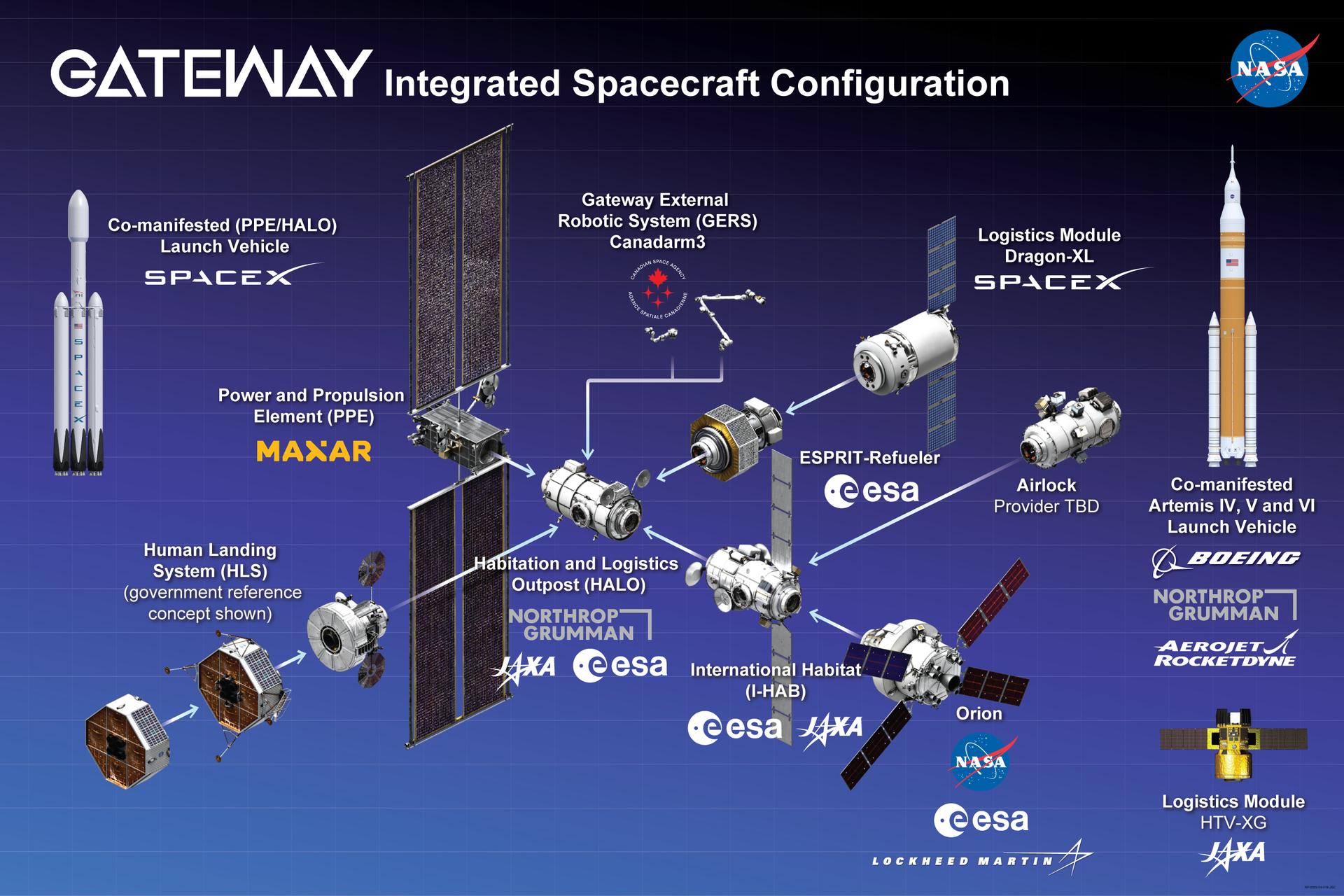
Image source: NASA
Significant progress has already been made toward the successful implementation of the project. The welding of the HALO module was completed by the Italian company Thales Alenia Space in 2023. In October 2024, the module successfully underwent stress testing in Turin, bringing it one step closer to launch.
Next, the module will be transported to Gilbert, Arizona, where Northrop Grumman specialists will equip it with everything necessary for astronaut habitation and scientific research before its deployment to lunar orbit.
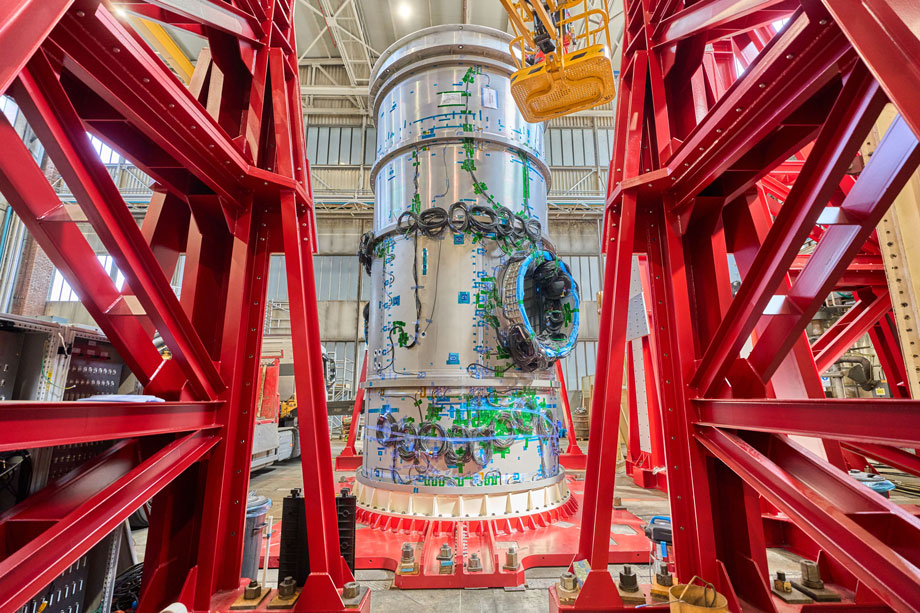
Source: NASA
At the end of the year, stress tests were also completed on the uncrewed Orion spacecraft, which will carry four astronauts on the journey around the Moon and to Gateway as part of the upcoming Artemis II mission. Over 11 months at an Ohio testing facility, engineers simulated real conditions the spacecraft might encounter, including an extreme launch abort scenario. The docking and undocking of Orion from the Gateway space station were also tested.
“These tests are absolutely critical because we have to complete all of these tests to say the spacecraft design is safe and we’re ready to fly a crew for the first time on Artemis II,” explained Michael See, Orion Program Manager. “This was the first time we tested the spacecraft in such an extreme environment on Earth.”
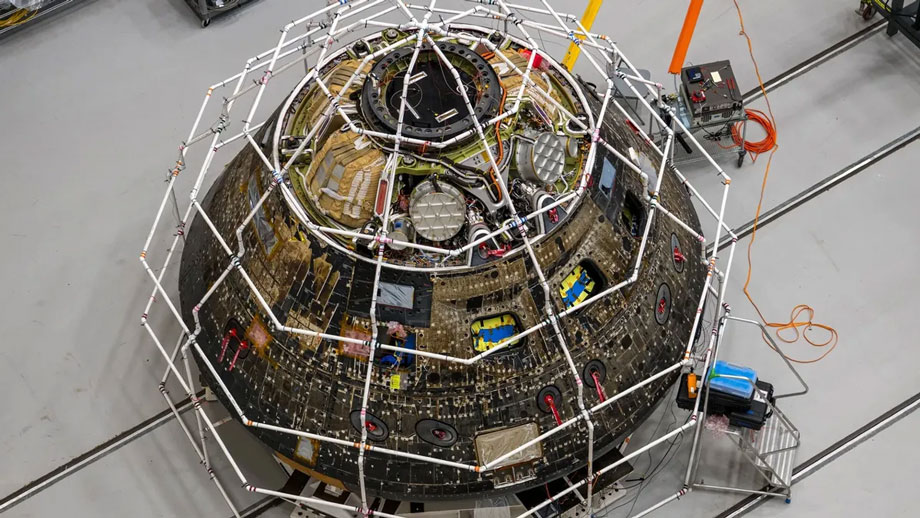
Source: NASA
The crew for the upcoming mission has been known since April 2023. It will include U.S. astronauts Gregory Wiseman, Victor Glover, Christina Koch, and Jeremy Hansen, representing the Canadian Space Agency.
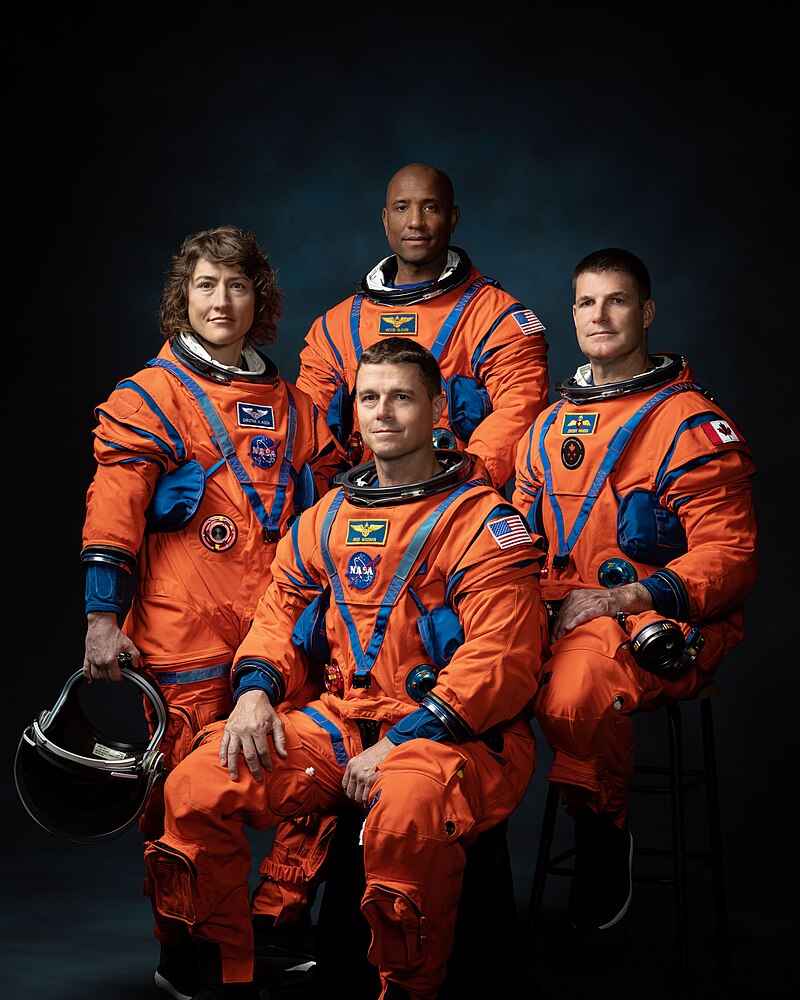
Source: NASA
In December 2024, it was announced that Gateway crew members would wear “smart” shirts to monitor their health. These shirts have previously been tested by ISS astronauts, but they were redesigned for future missions due to the higher radiation exposure. The lunar station will be 1,000 times farther from Earth than the ISS.
The shirts, made from the unique “Astroskin” material, are being developed by the Canadian company Hexoskin under a contract with the Canadian Space Agency.
As we await the historic launch of the first two components of the future lunar space station, NASA is fueling interest with realistic visualizations showcasing the exterior view of Gateway and its key modules.

